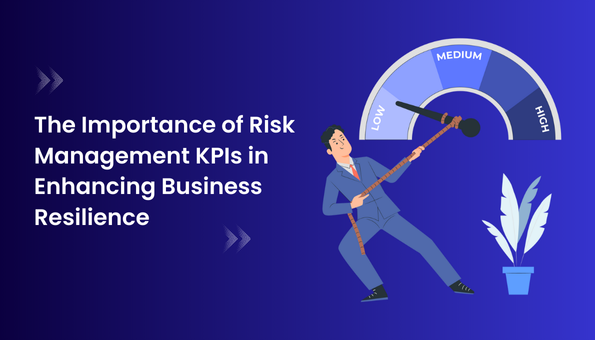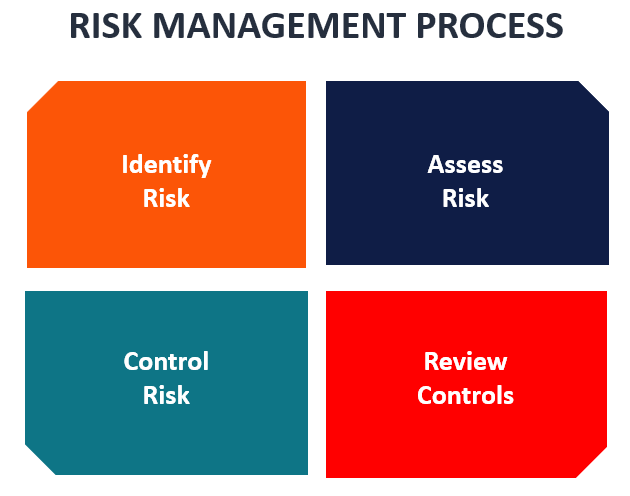Understanding the Significance of Risk Management in Current Business Practices
Wiki Article
Checking out the Significance of Risk Management for Effective Decision-Making Methods
In the intricate globe of company, Risk Management emerges as an important element in the decision-making process. The capacity to determine potential hazards and possibilities, and strategize as necessary, can mean the difference in between success and failure.Understanding the Idea of Risk Management
Risk Management, a crucial element in decision-making, is often misunderstood or oversimplified. Risk Management entails self-displined and structured techniques, making use of information and informative evaluations. From economic uncertainties, lawful responsibilities, calculated Management mistakes, to mishaps and natural catastrophes, it deals with different threats - importance of risk management.The Function of Risk Management in Decision-Making Processes
In the world of tactical preparation and organization procedures, Risk Management plays an essential duty in decision-making processes. It assists in identifying potential hazards and uncertainties that could impact the success of company goals. By tracing these risks, companies can create techniques to reduce their impact, making sure business connection and stability. Risk Management hence becomes an important tool in decision-making, aiding leaders to make informed choices based on a comprehensive understanding of the threats entailed. It urges a proactive approach, enabling companies to prepare and expect for feasible future circumstances. This significantly lowers the chance of adverse repercussions, promoting extra reliable and efficient decision-making strategies. Therefore, Risk Management functions as an essential component in the decision-making procedures of any organization.
How Risk Management Enhances Strategic Planning
In the context of calculated preparation, Risk Management plays a pivotal role. Starting with the identification of prospective dangers, it better reaches the application of Risk mitigation steps. The function of Risk Management is vibrant but not static, as it requires consistent tracking and adjusting of strategies.Determining Possible Risks

Implementing Risk Mitigation
Risk mitigation approaches can vary from Risk avoidance, Risk transfer, to run the risk of decrease. Each method ought to be customized to the particular Risk, considering its prospective impact and the organization's Risk resistance. Effective Risk mitigation needs a deep understanding of the Risk landscape and the potential impact of each Risk.Tracking and Changing Techniques
Though Risk reduction is an essential action in strategic planning, constant tracking and change of these approaches is equally vital. This ongoing process enables companies to determine brand-new threats and reassess existing click over here now ones, making certain the implemented approaches remain reliable in the ever-changing service setting. It additionally provides a possibility to examine the success of the Risk Management steps, enabling modifications to be made where required, additional improving tactical preparation. Efficient monitoring and change need making use of analytics and crucial have a peek at these guys performance indications (KPIs) to measure effectiveness. These tools supply beneficial data-driven understandings that can educate critical decision-making. Surveillance and readjusting Risk Management techniques is a vital element for improving a company's durability and tactical planning.Situation Studies: Successful Risk Management and Decision-Making
Worldwide of service and money, successful Risk Management and decision-making frequently act as the columns of thriving enterprises. One such entity is an international oil business that minimized monetary loss by hedging versus changing oil costs. In an additional instance, a technology startup flourished by determining and approving high-risk, high-reward approaches in an unstable market. An international bank, faced with regulatory unpredictabilities, efficiently browsed the scenario through aggressive Risk assessment and vibrant decision-making. These instances highlight the value of astute Risk Management in decision-making procedures. It is not the absence of Risk, but the Management of it, that typically differentiates effective companies from not successful ones. These instances emphasize the critical role of Risk Management in tactical decision-making. importance of risk management.Tools and Methods for Efficient Risk Management
These tools, such as Risk signs up and heat maps, help in recognizing and examining prospective risks. Risk feedback approaches, a vital element of Risk Management, include accepting, staying clear of, transferring, or mitigating dangers. With these tools and strategies, decision-makers can navigate the complex landscape of Risk Management, thus helping with informed and reliable decision-making.Future Trends in Risk Management and Decision-Making Strategies
As we discover the huge landscape of Risk Management, it ends up being obvious that the tools and techniques used today will certainly proceed to progress. The concept of Risk society, where every participant resource of an organization is conscious and entailed in Risk Management, will certainly acquire much more importance. These fads declare a more comprehensive and aggressive method in the direction of Risk Management and decision-making.Verdict

Risk Management therefore becomes a vital tool in decision-making, aiding leaders to make informed options based on a thorough understanding of the dangers included. Risk mitigation techniques can range from Risk avoidance, Risk transfer, to run the risk of decrease (importance of risk management). Efficient Risk reduction calls for a deep understanding of the Risk landscape and the potential effect of each Risk. Risk response strategies, an essential part of Risk Management, entail approving, preventing, transferring, or mitigating dangers. The principle of Risk culture, where every member of a company is mindful and entailed in Risk Management, will certainly gain a lot more importance
Report this wiki page